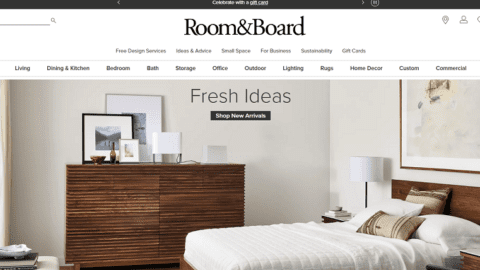Downtown retail is facing a significant decline, grappling with the lasting effects of the pandemic, the unstoppable rise of ecommerce and the mounting pressure of surging interest rates. However, amidst the decline that shrouds downtown districts, a powerful opportunity for resurgence emerges.
Wynwood, Miami, serves as a prime example of this remarkable resurgence, having once been plagued by neglect and industrial blight yet rising from the ashes to become a beacon of bustling creativity and commerce. A similar tale of revival unfolds in Miami’s Downtown District, where what was once an uneventful and mundane center has transformed into an extraordinary hub of activity and prosperity.
The revitalization of downtown districts presents a promising opportunity to create vibrant retail hubs in the face of a rapidly changing retail landscape. By embracing innovative solutions like autonomous vehicle (AV) technology, repurposing existing spaces and utilizing Building Information Modeling (BIM), cities can foster engaging shopping experiences while addressing mobility and parking challenges. Prioritizing pedestrians, implementing comprehensive parking management strategies and integrating diverse transportation alternatives are essential steps toward rejuvenating downtown areas and making them thriving centers of commerce and community.
Wynwood, Miami
The Wynwood Business Improvement District (BID) has proven to be a resounding success in revitalizing the artistic neighborhood of Wynwood, Miami. In 2013, the City of Miami and local stakeholders collaborated to establish the BID through Wynwood’s BID Formation Resolution R-13-0136. The BID’s funding originated from a special assessment of more than 400 property owners who eagerly sought to revive the district. The revenue generated was strategically reinvested into a comprehensive range of enhanced services, including security, sanitation, arts support, events, marketing, parking and advocacy.
Advertisement
The BID’s primary focus was on prioritizing pedestrian safety and uplifting the streetscape. It worked closely with the city to implement enhancements like next-generation sidewalks, tree planting, benches and pedestrian-friendly streetlamps, all of which contributed to creating a more welcoming environment for pedestrians within the district.
Safety for pedestrians and cyclists was of paramount concern, prompting the implementation of foot and bike patrol officers, as the need for car patrol services was no longer fitting given the unique requirements of ensuring the safety of those on foot and bikes.
Alongside these efforts, the BID took the initiative to preserve the district’s iconic murals and appointed an Art Curator, showcasing a deep commitment to preserving and enhancing Wynwood’s artistic heritage. To enrich the visitor experience, the BID, in concert with the Wynwood Arts District Association (WADA), developed and installed “Wynwood Styled” signage, providing easy navigation within the district and guiding visitors to Wynwood’s numerous attractions.
By partnering with WADA, the BID successfully secured grants from private sectors and foundations, unlocking opportunities for expansive placemaking activities. Events and inventive marketing strategies were meticulously organized to promote the district’s vibrant atmosphere and attract more visitors. The success of the Wynwood BID serves as a testament to the power of collaboration, vision and responsible investment in creating vibrant and thriving urban communities.
Downtown Miami
In October 2009, Miami’s Downtown Development Authority (DDA) published its 2025 Downtown Master Plan, aiming to revitalize the downtown district by leveraging its iconic waterfront, elevate its Grand Boulevards and establish it as the business and cultural epicenter of the Americas. The Master Plan sought to enhance main streets such as Biscayne Blvd. and Brickell Ave. to rival the charm of renowned retail streets like Champs-Élysées in Paris and Las Ramblas in Barcelona.
One of the central elements of this revitalization was the design of new streetscapes along Brickell Ave. The objective was to create pedestrian corridors that would not only attract new retailers and entertainment destinations but also integrate the redesign with surrounding streets to maintain aesthetic continuity.
To prioritize pedestrians and promote a safer environment, the Master Plan proposed replacing parallel parking with wider sidewalks, shaded trees and amenities, encouraging ground-floor outdoor retail and dining establishments. The inclusion of gateway elements and landmarks was proposed to enhance the identity of the area and create a memorable sense of arrival for visitors.
Recognizing the importance of parking in urban planning, the Master Plan aimed to implement a holistic parking management strategy. This included collaborating with key stakeholders to create a downtown-wide central valet service, making it more convenient for visitors.
To further reduce congestion, the Master Plan proposed employee discounts and reward programs to incentivize the use of public transit instead of private vehicles. Incorporating a diverse range of transportation alternatives, the Plan featured a complimentary rubber tire trolley service, convenient car-sharing programs, pedicabs and bike-rental services. Miami’s 2025 Downtown Master Plan showcased a comprehensive and visionary approach to revitalizing the downtown district into a dynamic center for commerce and culture.
AV Technology and BIM
To foster a thriving retail environment, it is crucial to address mobility and parking challenges. One innovative solution that has the potential to revolutionize parking is autonomous vehicle (AV) technology. While currently in the transitional phase between limited self-driving and full self-driving capabilities under certain conditions, AV technology holds the promise of reducing the need for vast parking lots and wide parking spaces by efficiently shuttling visitors to and from designated drop-off and pickup points away from walkable areas, thereby alleviating the demand for on-street parking.
With the reduced need for parking, downtown districts may repurpose existing parking garages into multi-functional spaces, such as residential, office, recreation and entertainment areas, not only to maximize the use of valuable real estate but also to convert these spaces into vibrant focal points for community events and activities. Planners and developers recognize the opportunity of attracting locals and visitors to these communal gathering points, while retailers may leverage increased foot traffic during such events to promote their offerings.
Building Information Modeling (BIM) is another transformative tool in the revitalization of downtown districts. BIM grants developers and retailers access to a rich repository of data concerning buildings and infrastructure, integrated with IoT sensors. This data-driven approach empowers businesses to comprehend foot traffic patterns, customer behavior and sales trends, facilitating well-informed decisions about store locations and layouts.
Further, BIM plays a vital part in all phases of redevelopment, from construction to facility management and maintenance. By accessing existing structures, utilities and proposed redevelopment plans, BIM provides comprehensive project visualization and digital prototyping, streamlining the construction process and fostering collaboration among stakeholders, architects, engineers, contractors and retailers. Serving as an invaluable resource for ongoing operations, maintenance planning, renovations and future expansions, BIM ensures the success of revitalized retail districts.
In conclusion, the resurgence of downtown districts offers a ray of hope amidst the challenges faced by the retail sector. The Wynwood BID and 2025 Downtown Master Plan exemplify successful revitalization efforts that prioritize pedestrians and creatively utilize existing spaces. By adopting these strategies and leveraging innovative solutions like AV technology and BIM, cities can create vibrant retail hubs that adapt to the evolving retail landscape and foster thriving communities.
Louis Archambault is Partner and Vice Chair of the Real Estate Practice at Saul Ewing. He represents foreign and domestic buyers, sellers, developers, investors and lenders throughout the U.S. in real estate transactions, particularly in the South Florida market. Drawing on 20 years of experience as a real estate attorney, Archambault assists these clients with an array of deals, including acquisitions, sales and financings involving residential, commercial and industrial properties. He particularly represents parties in development and redevelopment projects, including those involving condominiums, distressed properties and opportunity zones and related opportunity funding. His condominium practice includes drafting and advising on condo projects or conversions, and he also assists with commercial leasing and land use and zoning issues. Orine Dadon is a Summer Intern at Saul Ewing.









